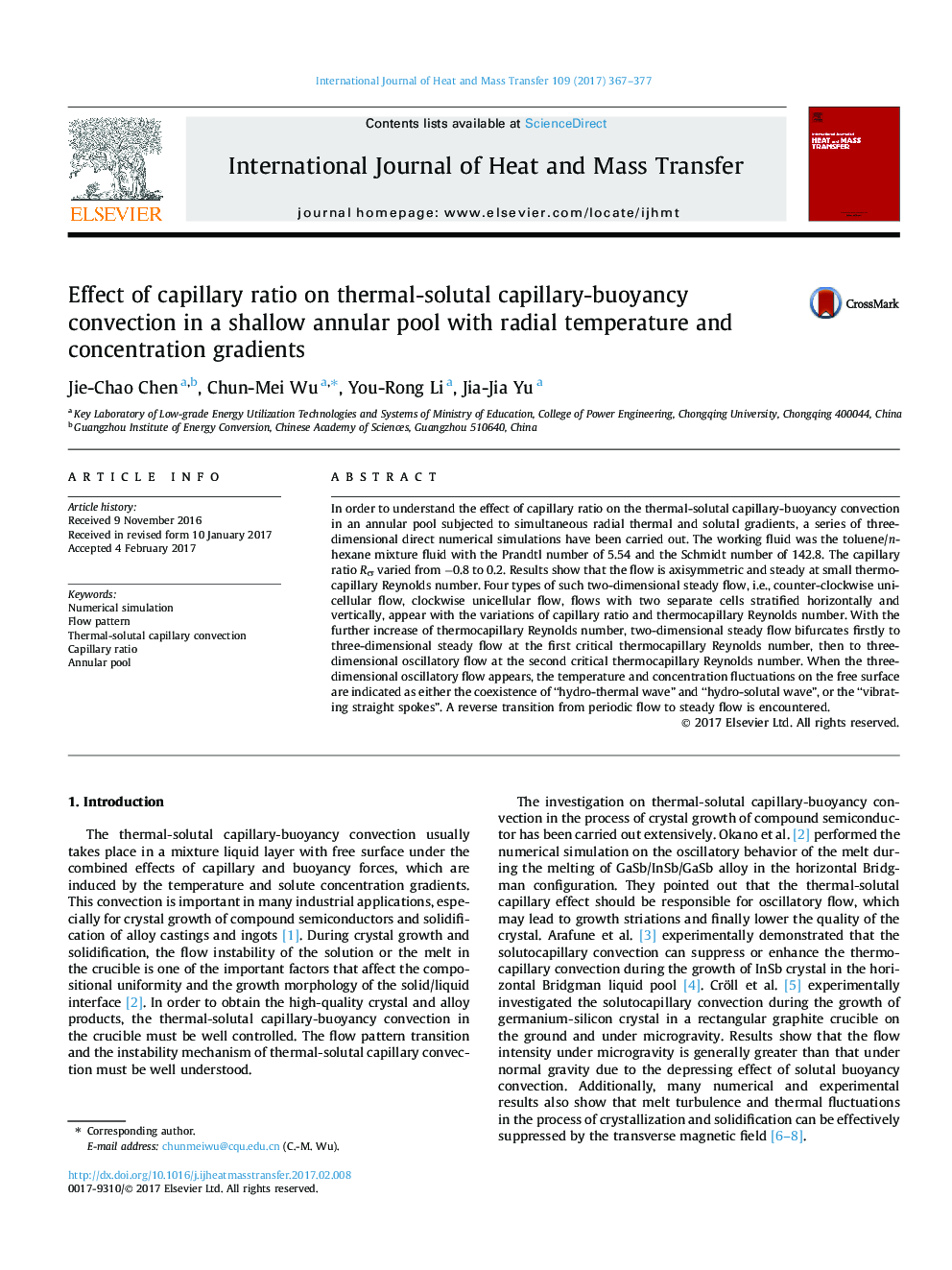| Article ID | Journal | Published Year | Pages | File Type |
|---|---|---|---|---|
| 4994493 | International Journal of Heat and Mass Transfer | 2017 | 11 Pages |
Abstract
In order to understand the effect of capillary ratio on the thermal-solutal capillary-buoyancy convection in an annular pool subjected to simultaneous radial thermal and solutal gradients, a series of three-dimensional direct numerical simulations have been carried out. The working fluid was the toluene/n-hexane mixture fluid with the Prandtl number of 5.54 and the Schmidt number of 142.8. The capillary ratio RÏ varied from â0.8 to 0.2. Results show that the flow is axisymmetric and steady at small thermocapillary Reynolds number. Four types of such two-dimensional steady flow, i.e., counter-clockwise unicellular flow, clockwise unicellular flow, flows with two separate cells stratified horizontally and vertically, appear with the variations of capillary ratio and thermocapillary Reynolds number. With the further increase of thermocapillary Reynolds number, two-dimensional steady flow bifurcates firstly to three-dimensional steady flow at the first critical thermocapillary Reynolds number, then to three-dimensional oscillatory flow at the second critical thermocapillary Reynolds number. When the three-dimensional oscillatory flow appears, the temperature and concentration fluctuations on the free surface are indicated as either the coexistence of “hydro-thermal wave” and “hydro-solutal wave”, or the “vibrating straight spokes”. A reverse transition from periodic flow to steady flow is encountered.
Related Topics
Physical Sciences and Engineering
Chemical Engineering
Fluid Flow and Transfer Processes
Authors
Jie-Chao Chen, Chun-Mei Wu, You-Rong Li, Jia-Jia Yu,
